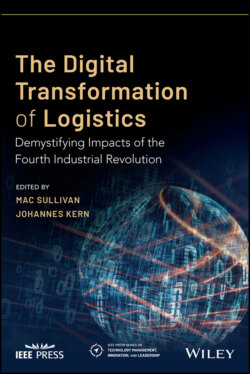Читать книгу The Digital Transformation of Logistics - Группа авторов - Страница 70
Technologies
ОглавлениеWhile the first commercial AM printers that were developed as early as 1986 relied on stereolithography (SLA) technology, where light exposure hardens a photopolymeric resin, over time, more technologies emerged so that now seven different categories of AM technologies can be distinguished7 (Silva et al. 1999; Wohlers 2012; Ngo et al. 2018). The three most popular ones – SLA, fused deposition modeling (FDM), and selective laser sintering (SLS) – will be subsequently described.
During an SLA manufacturing process, a concentrated beam of ultraviolet (UV) light or a laser is focused onto the surface of a container filled with a liquid photopolymer. The beam is focused and creates each layer of the target product through cross‐linking or degrading of the polymer (Dassault Systèmes 2020). Advantages of this technique are high accuracy, a smooth surface finish, and a range of functional applications. However, the resulting product is sensitive to long exposure to UV light. It is most suitable for functional prototyping, patterns, molds, and tooling, dental applications, jewelry prototyping and casting, and model making (Formlabs 2020b). In FDM, a continuous filament of a thermoplastic material is used as base material. The filament is fed from a coil, through a moving heated printer extruder head. The molten material is forced out of the extruder's nozzle and deposited onto a platform. Once the first layer is completed, the extruder and the platform are parted away in one step, and the second layer can then be directly deposited onto the growing item. A variety of materials can be processed. Most popular are thermoplastics, but also paste‐like materials such as ceramics, concrete, and chocolate can be used (Dassault Systèmes 2020). Advantages of FDM is its speed and that there are low‐cost consumer machines and materials available. However, its drawbacks are low accuracy, low level of details, and limited design compatibility. Therefore, it is most suitable for low‐cost rapid prototyping and basic proof‐of‐concept models (Formlabs 2020b). For SLS, lasers are used to sinter powdered material layer by layer to create a solid structure. The final product, rendered enveloped in loose powder, is then cleaned with brushes and pressurized air. The main materials used in the SLS AM process include polyamide, alumide, and rubber‐like materials (Dassault Systèmes 2020). The technology's advantages are design freedoms and that there is no need for support structures. However, there are issues regarding rough surface finishes and limited material options. It is therefore best applied in functional prototyping and for short‐run, bridge, or custom manufacturing (Formlabs 2020b). These technologies are compared in Table 4.1.
